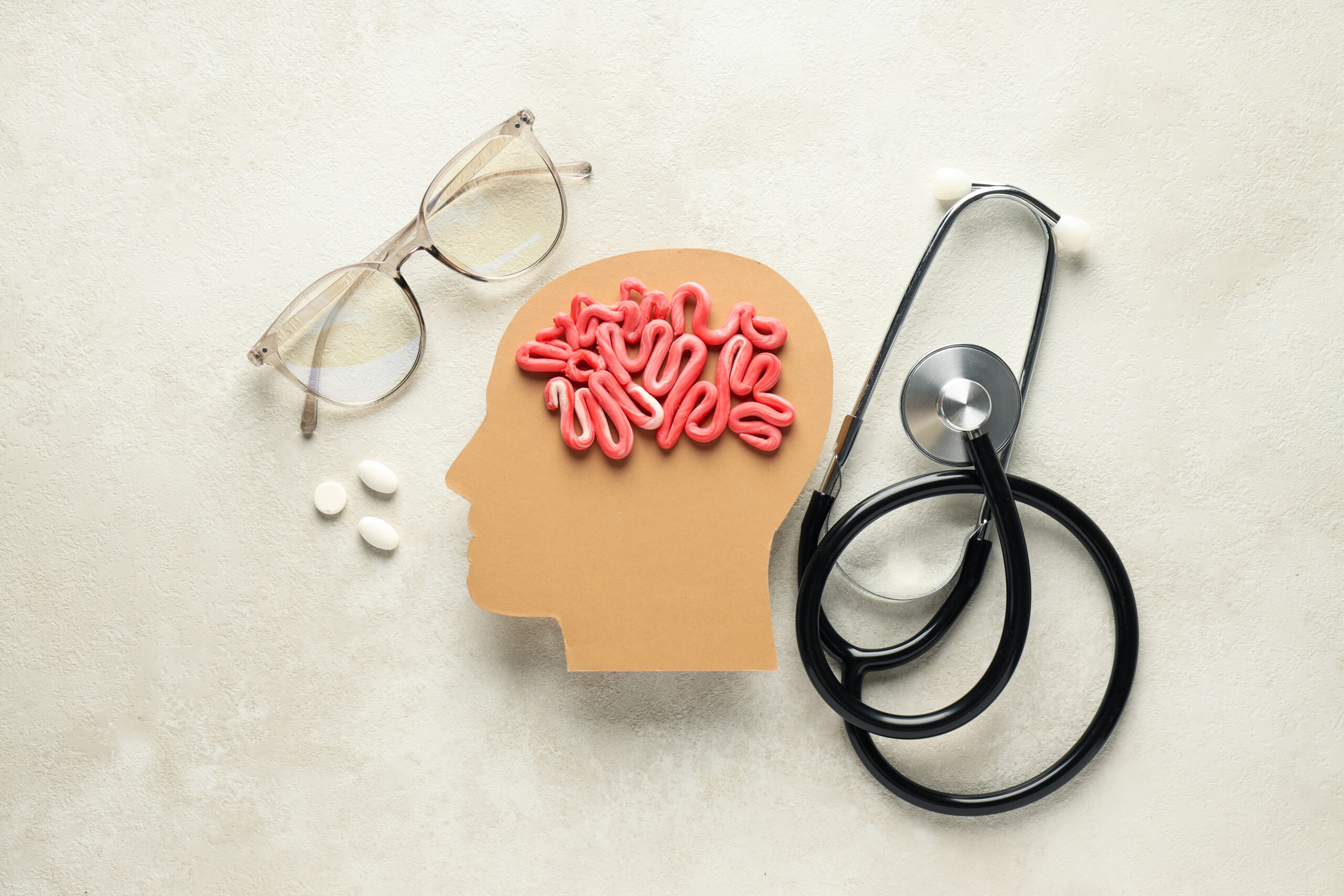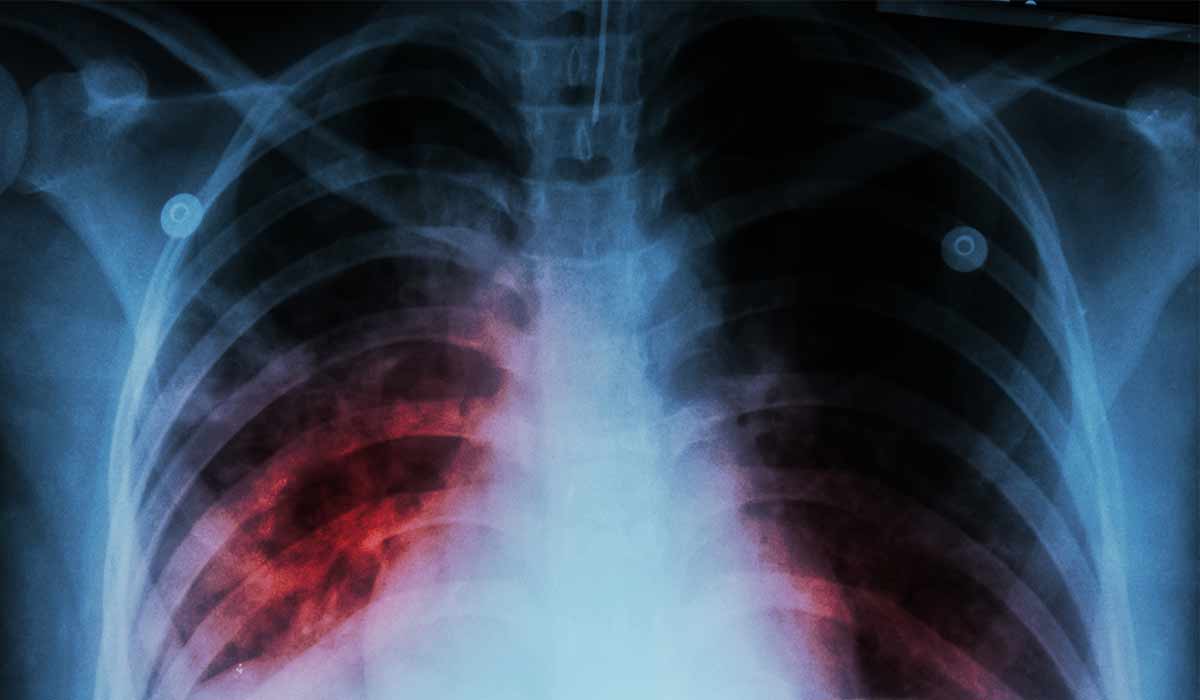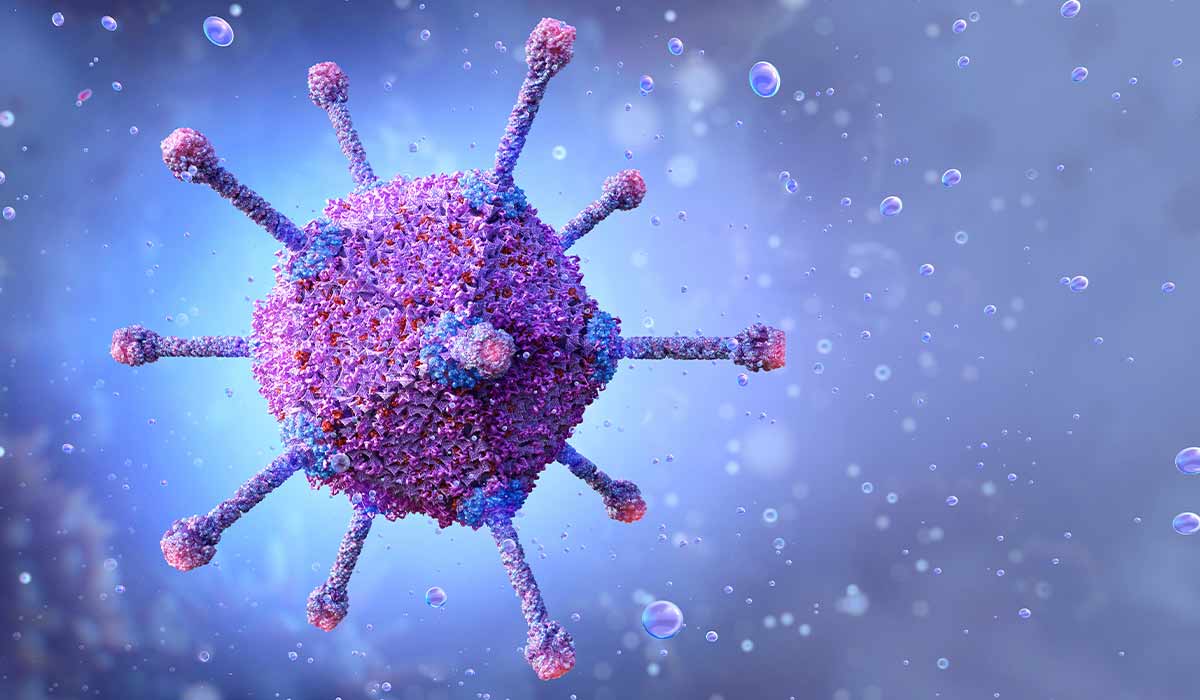Meningitis is an acute disease in which the pathological process affects the structures of the brain (the pia mater, arachnoid mater, subarachnoid space, and cerebral ventricles and their lining) in response to infection. The factors responsible for the development of the condition may be various groups of microorganisms: bacteria, viruses, fungi, and protozoa.
As already mentioned, there are several types of meningitis![]() . The most common causes of this disease include viral and bacterial infections. However, less common forms of meningitis are caused by a fungal infection.
. The most common causes of this disease include viral and bacterial infections. However, less common forms of meningitis are caused by a fungal infection.

Viruses enter the body most often through droplets through the respiratory system and gastrointestinal tract (the source of viruses are mainly sick people), and infection is less common from infected animals (cows, ticks).
The infectious nature of clinical symptoms most often accompanies other diseases. The cause of meningeal superinfection is usually mumps, chickenpox, shingles, measles, and sometimes influenza. The course of the disease is generally mild, with no visible disturbances in the functioning of the nervous system.
The most common causes of viral meningitis![]() are:
are:
The course of viral meningitis does not differ much from bacterial meningitis. The symptoms of the disease are usually identical, but their severity is often the differentiating factor. Viral infections are much less severe; the condition has a milder course and causes significantly fewer complications than bacterial infections.
More often, viral meningitis is preceded by symptoms![]() of upper respiratory tract infections (e.g., sore throat and its redness, flu-like symptoms).
of upper respiratory tract infections (e.g., sore throat and its redness, flu-like symptoms).
The clinical picture of viral meningitis in newborns is not specific, and typical meningeal symptoms and fever are usually absent. Parents often notice a change in their child's behavior – the child becomes restless, unenthusiastic, or sleepy.
As the child![]() ages, the course of meningitis becomes more characteristic of this disease. In infants and children up to 5 years of age, symptoms of inflammation usually appear suddenly and are accompanied by high fever.
ages, the course of meningitis becomes more characteristic of this disease. In infants and children up to 5 years of age, symptoms of inflammation usually appear suddenly and are accompanied by high fever.
Children become sleepy, lose interest in toys and their surroundings, and their general condition quickly deteriorates. Parents observe the so-called “suffering facial expression” and other symptoms, e.g.:
Meningeal symptoms (e.g., neck stiffness – the child cannot bend the head to the chest) are more common in this age group. Meningeal symptoms are a consequence of irritation of the meninges of the brain by the ongoing inflammatory process and with vomiting, headaches, and hypersensitivity to various types of stimuli (e.g., photophobia, body hypersensitivity, hypersensitivity to noise) – create the so-called meningeal assembly. Meningeal symptoms may vary in severity.
In children over five years of age, teenagers, and adults, viral meningitis usually has a typical course and does not pose any diagnostic problems.
The most common symptoms of meningitis include:
Neurological disorders (e.g., convulsions, speech disorders, or muscle paralysis) are less common.
The most important test when suspecting viral meningitis is the cerebrospinal fluid examination![]() . A culture of the cerebrospinal fluid is also performed, excluding the bacterial inflammation factor. The liquid is collected using an invasive method of lumbar puncture
. A culture of the cerebrospinal fluid is also performed, excluding the bacterial inflammation factor. The liquid is collected using an invasive method of lumbar puncture![]() . The doctor always conducts a physical examination and an interview with the patient or, in the case of a child, also with their guardians.
. The doctor always conducts a physical examination and an interview with the patient or, in the case of a child, also with their guardians.
In the diagnosis of viral meningitis, the following procedures are performed:
The risk of developing complications![]() of viral meningitis is many times lower than for bacterial meningitis. Possible medical problems in the acute setting include:
of viral meningitis is many times lower than for bacterial meningitis. Possible medical problems in the acute setting include:
Viral meningitis rarely causes serious health problems, such as hearing impairment or hydrocephalus.
Since all patients suspected of having viral meningitis require hospitalization, it is necessary to see a doctor immediately, and if the patient's condition is serious, call an ambulance. Due to the contagiousness of some forms of meningitis, the number of people in contact with the patient should be limited to the necessary minimum.
Treatment of viral meningitis can be divided into causal, i.e., antiviral drugs administered intravenously, and symptomatic treatment.
When talking about symptomatic treatment![]() , it should be understood as:
, it should be understood as:
A significant element is the prevention of meningitis, especially among children. The risk of meningitis increases in children suffering from diseases such as mumps, measles, polio, chickenpox, and tick-borne encephalitis. The only way to prevent it is to use vaccinations against the above-mentioned diseases; these vaccinations significantly reduce the likelihood of complications such as viral meningitis.
Specific treatment is also used, which involves administering antiviral drugs to the patient. Such treatment is possible, for example, in cases of varicella virus infection or HSV – herpes simplex virus or CMV infection – cytomegalovirus or EBV – Epstein-Barr virus.

Bacterial meningitis![]() is an acute infectious disease that develops due to bacterial invasion
is an acute infectious disease that develops due to bacterial invasion![]() of brain structures. How the infection spreads, i.e., the places of the initial release of bacteria may be:
of brain structures. How the infection spreads, i.e., the places of the initial release of bacteria may be:
Bacterial infections of the meninges are favored by:
Symptoms of bacterial meningitis![]() appear suddenly. The first symptoms are usually fever, chills, vomiting, headaches, and a stiff neck. In addition, irritability and hypersensitivity to stimuli are very characteristic: hypersensitivity to touch and hypersensitivity to light.
appear suddenly. The first symptoms are usually fever, chills, vomiting, headaches, and a stiff neck. In addition, irritability and hypersensitivity to stimuli are very characteristic: hypersensitivity to touch and hypersensitivity to light.
If appropriate treatment is not initiated, there will be increasing drowsiness in the following days, eventually leading to loss of consciousness.

A carefully collected interview provides valuable tips. Sudden onset of symptoms, without any preceding prodromal symptoms, is typical for purulent meningitis. Viral meningitis usually develops in two phases and is preceded by prodromal symptoms, such as symptoms of upper respiratory tract infection, fever, malaise, or muscle and joint pain. Meningitis should be suspected in any patient with a fever and neurological symptoms, including headache, impaired consciousness, photophobia, neck stiffness, hyperesthesia, or seizure.
In elderly patients, symptoms may be discreet and limited, e.g., mental disorders or disturbances in consciousness. The interview includes significant information regarding the duration of symptoms and the order in which they occur, as well as preceding infections, head injuries, contact with sick people or traveling to endemic areas, comorbidities that contribute to meningitis (e.g., diabetes, immune disorders, lack of spleen) and social conditions (malnutrition, alcoholism, drug addiction, homelessness).
During the medical examination, special attention is paid to the general condition, consciousness disturbances, and assessment of vital functions. Blood pressure and heart rate should also be measured, paying attention to the slow heart rate (bradycardia) accompanying increased intracranial pressure (Cushing's reflex).
A reliable and accurate diagnosis![]() is made based on examining cerebrospinal fluid obtained by lumbar puncture. Therefore, lumbar puncture and cerebrospinal fluid examination are essential in diagnosing meningitis.
is made based on examining cerebrospinal fluid obtained by lumbar puncture. Therefore, lumbar puncture and cerebrospinal fluid examination are essential in diagnosing meningitis.
The cerebrospinal fluid is turbid and often yellowish in classic purulent bacterial meningitis. The highly inflamed liquid contains a significantly increased number of cells, most of which are neutrophils (neutrophils). The protein concentration is also increased, and the glucose concentration is reduced considerably.
In bacterial nonpurulent meningitis, the cerebrospinal fluid is opalescent or slightly turbid. It contains many more cells, most of which are mononuclear cells (lymphocytes and monocytes). Protein concentration is also increased but less than in purulent meningitis. Glucose levels are usually low.
If the puncture cannot be performed immediately due to the patient's serious condition, a blood culture should be performed, and the patient should be given intravenous antibiotics. Computerized tomographic examination of the head should be performed before lumbar puncture if there are focal neurological symptoms or a history of confirmed head trauma.
The risk of complications![]() from bacterial meningitis is high. The most common complications in the acute condition include:
from bacterial meningitis is high. The most common complications in the acute condition include:
The permanent consequences of bacterial meningitis may include severe health problems such as hearing impairment, including deafness, hydrocephalus, paresis or spastic paralysis, mental retardation, cognitive impairment, and speech disorders.
Since all patients suspected of having bacterial meningitis require hospitalization, it is necessary to see a doctor immediately or call an ambulance if the patient's condition is serious. Due to the contagiousness of some forms of meningitis (meningococcal meningitis), the number of people in contact with the patient should be limited to the minimum necessary.
Treatment of bacterial meningitis can be divided into causal, i.e., intravenous antibiotics![]() , and symptomatic. The choice of antibiotic therapy depends on the most likely etiology, the patient's age, local epidemiology and drug sensitivity of microorganisms, and coexisting diseases (e.g., reduced immunity, diabetes, cerebrospinal fluid leakage, drug allergies, liver and kidney diseases).
, and symptomatic. The choice of antibiotic therapy depends on the most likely etiology, the patient's age, local epidemiology and drug sensitivity of microorganisms, and coexisting diseases (e.g., reduced immunity, diabetes, cerebrospinal fluid leakage, drug allergies, liver and kidney diseases).
Symptomatic therapy involves administering intravenous fluids to compensate for water and electrolyte disturbances, anti-edematous and anti-inflammatory treatment, antipyretic and analgesic drugs, prevention of convulsions, and appropriate nutrition.
Early rehabilitation is A significant treatment element, consisting of passive and then active exercises.
Bacterial meningitis can be prevented by vaccination. The risk of disease can also be reduced by correctly treating conditions that contribute to the development of meningitis and observing general hygiene rules.
The number of pathogenic fungi includes about 270 types. They are common in the natural environment – they occur in the ground, in water, in decaying organic remains, in ventilation shafts, in air conditioning installations, in the excrement of pigeons and other birds, as well as on mucous membranes of the digestive tract and oral cavity and human skin. Except for fungi of the genus Candida, which are a component of the normal flora of the human digestive tract, most fungi reach the human body through the respiratory tract or damaged skin. The central nervous system infection may present as acute or chronic meningitis, brain abscess, encephalitis, or stroke.
Central nervous system involvement manifests in symptoms of chronic meningitis, such as headaches, fever, drowsiness, sensory disturbances, memory disturbances, cranial nerve paresis, visual disturbances, and meningeal signs.
It differs from bacterial meningitis in that many patients present with symptoms that have persisted for weeks. Its course is chronic, and the only sign for a long time is a headache.
The suspicion of fungal meningitis![]() is based on the clinical picture of a patient with risk factors for systemic mycosis, and confirmation is the presence of the fungus in the cerebrospinal fluid. Cerebrospinal fluid is collected for the examination, and imaging tests are performed – computed tomography and magnetic resonance imaging.
is based on the clinical picture of a patient with risk factors for systemic mycosis, and confirmation is the presence of the fungus in the cerebrospinal fluid. Cerebrospinal fluid is collected for the examination, and imaging tests are performed – computed tomography and magnetic resonance imaging.
The most important preventive measure against meningitis![]() is vaccination
is vaccination![]() . These are especially against meningococci, tick-borne meningitis, and rubella virus.
. These are especially against meningococci, tick-borne meningitis, and rubella virus.
In addition to vaccinations, it is significant to treat the infection correctly. Meningitis is caused by complications following respiratory or ear infections. Correctly selected antibiotic therapy can prevent meningitis in the future.
Table of Contents

Listeria is a bacterium that can cause infectious disease. You can get infected through food. Find out how to avoid… read more »

Tuberculosis is an infectious disease caused by mycobacteria. There are many types of tuberculosis with varying symptoms. Learn it all… read more »

Hydrocephalus is a neurological condition in which cerebrospinal fluid (CSF) builds up within the brain's ventricles. The term' hydrocephalus' combines… read more »

Epstein Barr Virus is a pathogen that causes infectious mononucleosis and many other diseases. Learn about the risks associated with… read more »

A viral infection occurs when a virus invades the body and begins to multiply. Viruses are tiny infectious agents that… read more »

Adenovirus is a pathogen commonly found in the environment. Find out how to recognise adenoviral infections. Learn about treatment and… read more »

Bacterial infections are diseases caused by the accumulation of bacteria in the body. How to distinguish them from viral infections?… read more »

Bacterial vaginosis is a common problem for women. Learn the risk factors so you can eliminate them and protect yourself… read more »

Labyrinthitis is a condition that causes worrying symptoms. Find out what causes inner ear disease. Learn how to recognise alarming… read more »